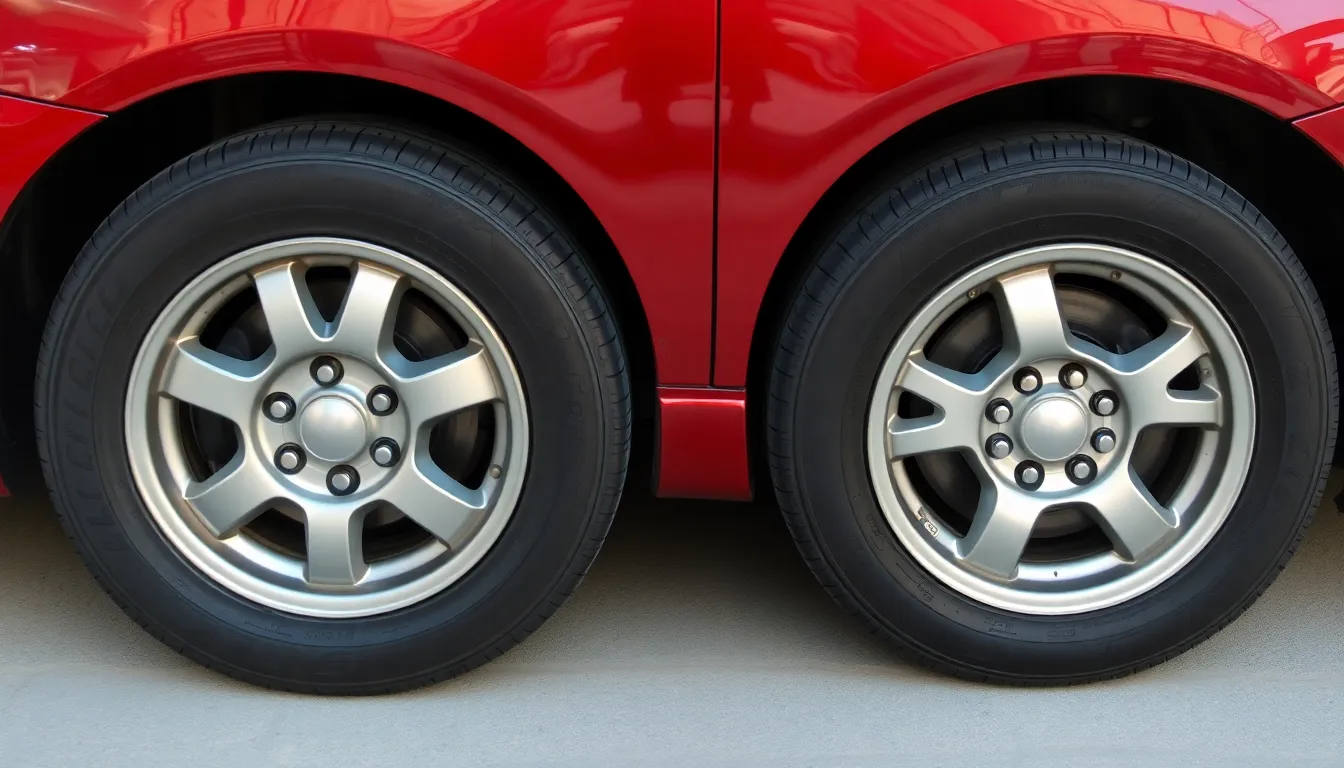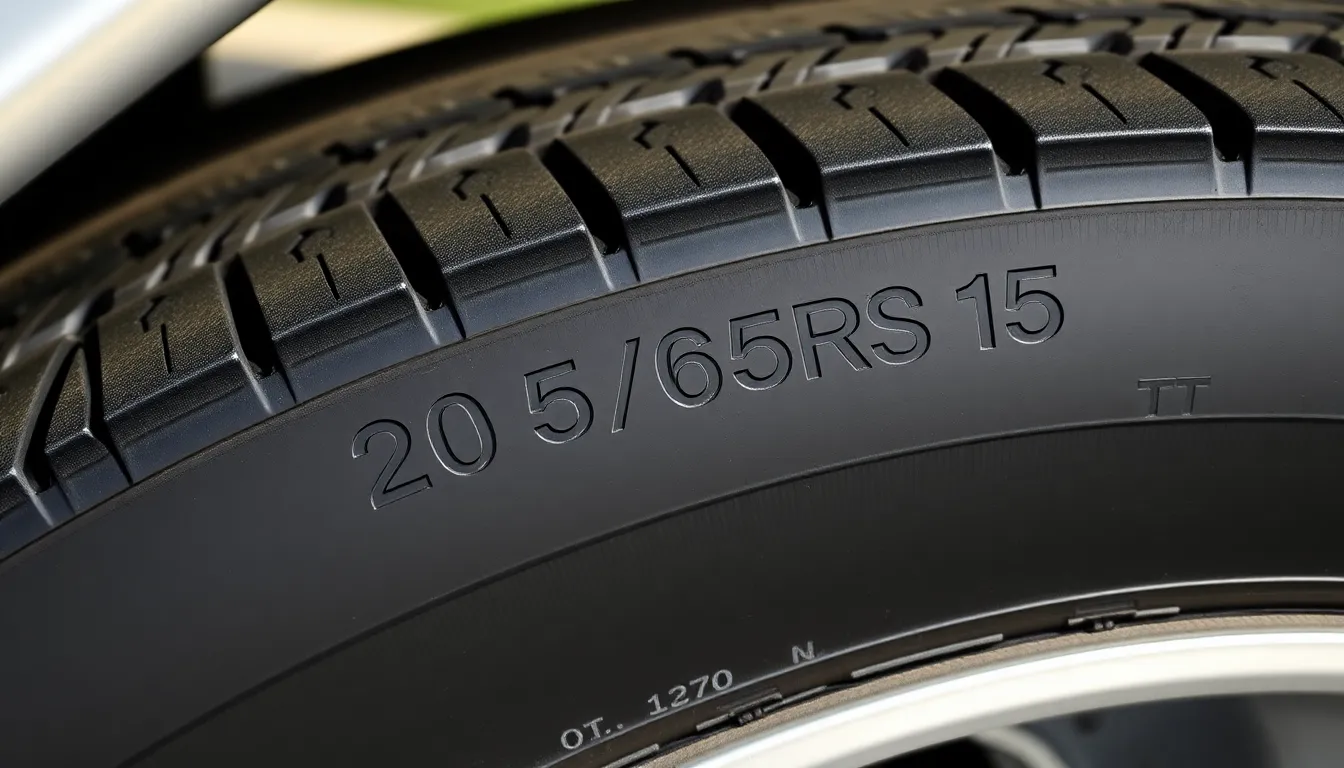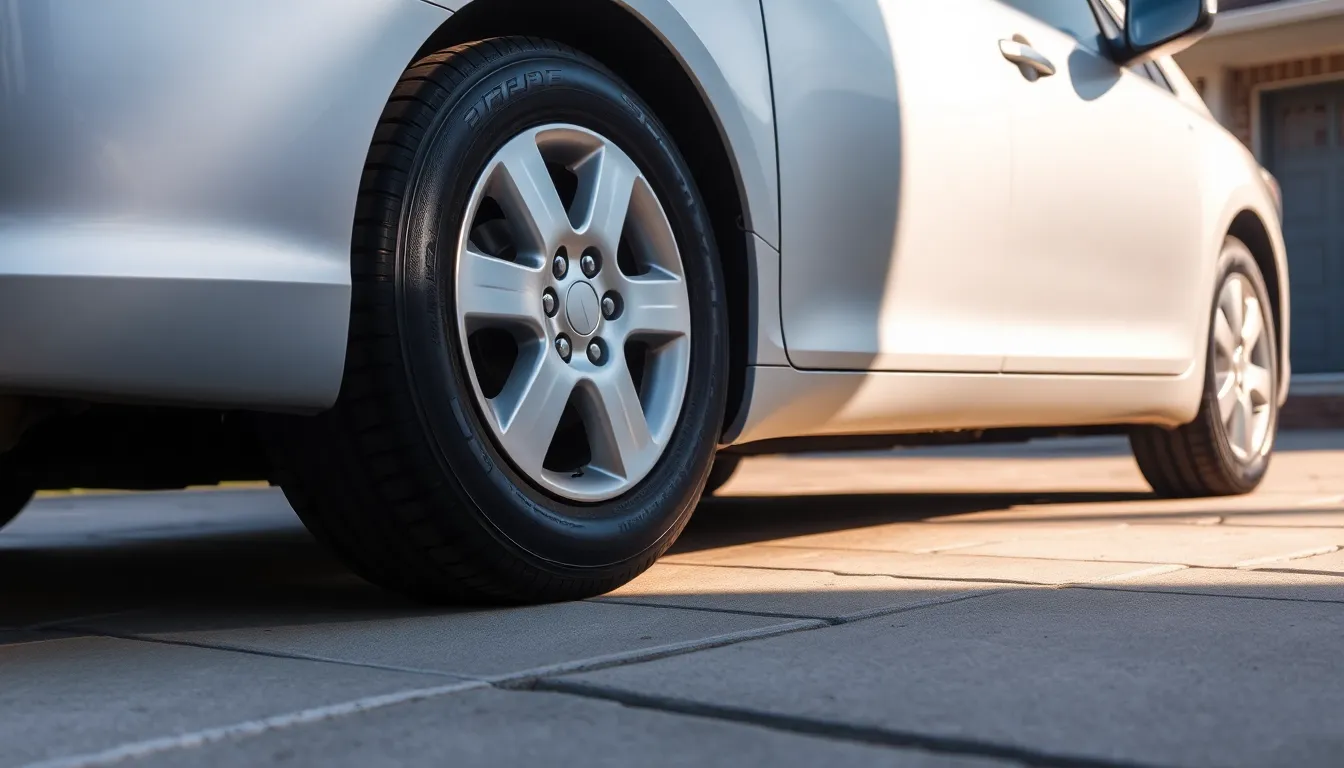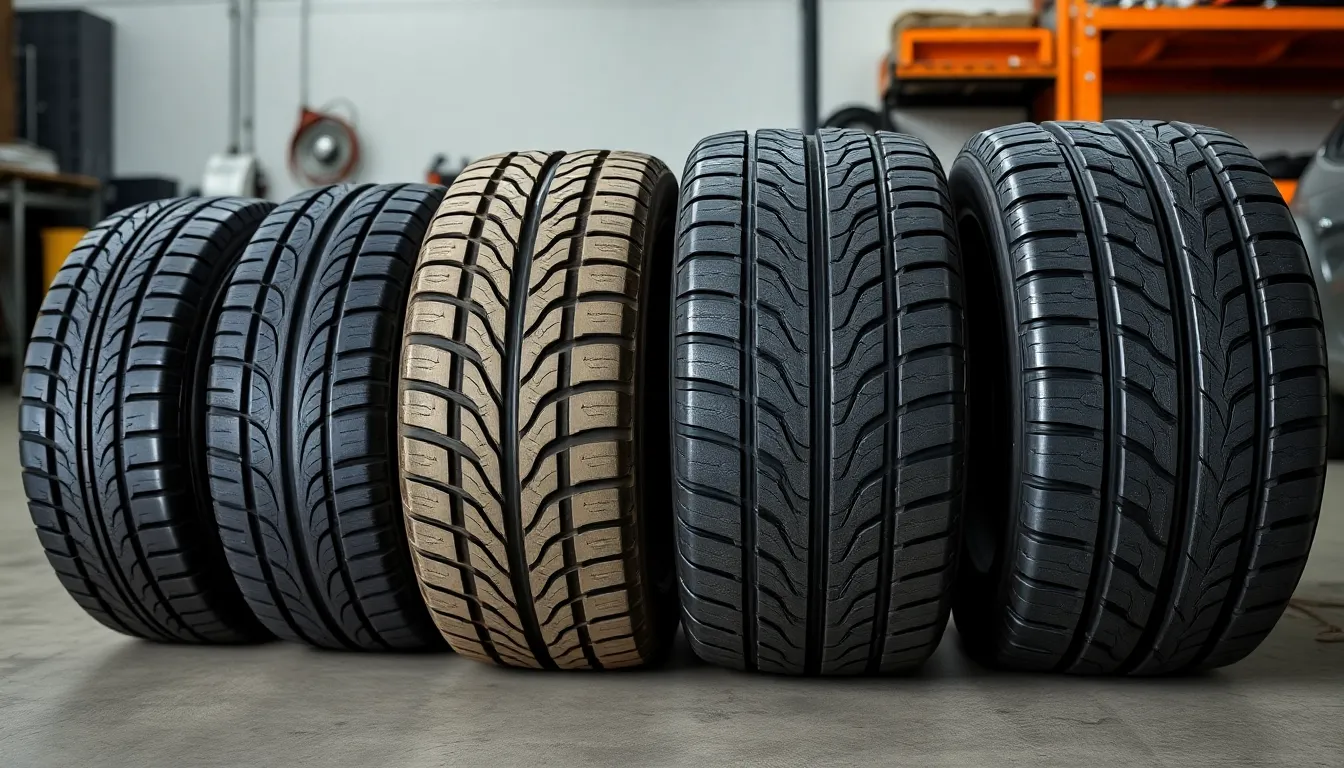Finding the right tire size for your 2006 Toyota Camry can feel overwhelming with so many options available today. We understand that choosing the correct tires isn’t just about maintaining your vehicle’s performance – it’s about ensuring your safety and getting the best value for your investment.
Your 2006 Camry came with exact tire specifications from the factory, and knowing these details helps you make informed decisions whether you’re replacing worn tires or upgrading for better performance. We’ve seen countless drivers struggle with tire selection simply because they didn’t have the right information at their fingertips.
That’s why we’ve compiled everything you need to know about 2006 Toyota Camry tire sizes, including OEM specifications, compatible alternatives, and expert recommendations. Let’s jump into the details that’ll help you choose the perfect tires for your Camry’s needs and your driving style.
Understanding the 2006 Toyota Camry Tire Size Specifications
The 2006 Toyota Camry features factory tire specifications that vary by trim level and wheel configuration. Base models come equipped with 15-inch wheels using 205/65R15 tires, while higher trim levels use 16-inch wheels with 215/60R16 tires.
Each tire size designation contains exact measurements that determine fitment and performance characteristics. The first number represents tire width in millimeters, the second indicates sidewall height as a percentage of width, and the letter R denotes radial construction. The final number specifies wheel diameter in inches.
| Trim Level | Standard Tire Size | Wheel Diameter | Tire Width | Sidewall Ratio |
|---|---|---|---|---|
| Base/LE | 205/65R15 | 15 inches | 205mm | 65% |
| XLE/Sport | 215/60R16 | 16 inches | 215mm | 60% |
Load index and speed rating complete the tire specification requirements for optimal Camry performance. The 205/65R15 tires carry a 94H rating, supporting 1,477 pounds per tire at speeds up to 130 mph. The 215/60R16 configuration uses 94V rated tires, maintaining the same load capacity while increasing speed capability to 149 mph.
Overall diameter differences between these tire sizes remain minimal, measuring 25.5 inches for the 15-inch setup and 25.2 inches for the 16-inch configuration. This consistency ensures accurate speedometer readings and maintains proper gear ratios regardless of the chosen wheel size.
Toyota engineers selected these exact dimensions to balance ride comfort, fuel efficiency, and handling characteristics. The 65-series sidewall on base models provides enhanced comfort over road imperfections, while the 60-series profile on upgraded trims delivers improved steering response and cornering stability.
Factory Tire Size Options for the 2006 Toyota Camry

Toyota equipped the 2006 Camry with two primary factory tire sizes based on trim level and configuration. Understanding these original equipment specifications helps owners make informed decisions when replacing their tires.
Base Model Tire Size
Base model 2006 Toyota Camrys feature 205/65R15 tires as their standard factory configuration. The 4-cylinder LE and SE trim levels also use this same tire size across most configurations. These 15-inch tire specifications provide enhanced ride comfort and cost-effective replacement options for budget-conscious drivers.
Most entry-level Camry models left the factory with this tire size mounted on 15-inch steel or alloy wheels. The 205/65R15 dimensions offer optimal fuel efficiency characteristics while maintaining Toyota’s engineering standards for daily driving comfort.
Higher Trim Level Tire Size
Upgraded trim levels and certain option packages received 215/60R16 tires as original equipment from the factory. European and Russian market variants specifically featured this larger tire size on select upmarket trim configurations. The 16-inch wheel and tire combination provides improved steering response and enhanced cornering stability compared to the base model setup.
Aftermarket upgrades occasionally included larger wheel options such as 215/55R17, 235/45R18, or 235/40R19 configurations. But, few US market 2006 Camrys departed the factory with wheels larger than 16 inches according to official manufacturing records. The 215/60R16 specification represents the most common upgrade size for higher trim models requiring enhanced performance characteristics.
| Trim/Model | Most Common Factory Tire Size |
|---|---|
| Base, LE 4-cyl, SE | 205/65R15 |
| Higher trims/upgrades | 215/60R16 (OE for select models) |
Decoding Tire Size Numbers on Your 2006 Camry

Understanding tire size numbers becomes straightforward once we break down each component of the alphanumeric code found on your Camry’s sidewall. The most common designation for base and LE 4-cylinder models reads 205/65R15, where each segment provides exact dimensional information.
205 represents the tire width measured in millimeters from sidewall to sidewall. Width affects contact patch size and influences handling characteristics during cornering maneuvers.
65 indicates the aspect ratio, expressing sidewall height as a percentage of the tire width. Calculating this means the sidewall height equals 65% of 205mm, resulting in 133.25mm of vertical rubber between the wheel rim and road surface.
R designates radial construction, the standard manufacturing method for modern passenger vehicle tires. Radial design provides better fuel economy and longer tread life compared to older bias-ply construction.
15 specifies the wheel diameter in inches that accommodates this tire size. Base Camry models use 15-inch wheels, while upgraded trims feature 16-inch or larger diameter options.
| Tire Size Component | 205/65R15 Example | 215/60R16 Example | Function |
|---|---|---|---|
| Width (mm) | 205 | 215 | Contact patch width |
| Aspect Ratio (%) | 65 | 60 | Sidewall height percentage |
| Construction | R (Radial) | R (Radial) | Manufacturing method |
| Wheel Diameter (inches) | 15 | 16 | Rim size compatibility |
Aspect ratios differ between trim levels, with higher trim models using 215/60R16 tires featuring lower sidewall profiles. Lower aspect ratios provide improved steering response but reduce ride comfort over rough surfaces.
Sportier configurations may use 215/55R17, 225/45R18, or 225/40R19 specifications for enhanced performance characteristics. Each progression toward larger wheel diameters typically reduces sidewall height while maintaining similar overall tire diameter for proper speedometer calibration.
Best Tire Brands for the 2006 Toyota Camry

Selecting premium tire brands enhances your 2006 Camry’s performance and safety across all driving conditions. Our comprehensive analysis covers top performers in three essential categories to match your exact needs and budget.
Performance Tires
Michelin Pilot Sport tires deliver exceptional handling and grip for drivers prioritizing responsive steering and cornering stability. Continental ExtremeContact models provide superior traction and enhanced responsiveness during aggressive driving maneuvers. Both brands excel in dry pavement conditions and offer improved braking distances compared to standard all-season options. Track-tested compounds in these performance tires maintain consistent grip levels during high-speed cornering and sudden direction changes.
All-Season Tires
Goodyear Assurance tires balance comfort with durability across seasonal weather variations for year-round reliability. Nokian Hakkapeliitta models offer excellent traction capabilities in rain, light snow, and dry conditions without compromising ride quality. These all-season options provide versatile performance characteristics that match Toyota’s original equipment specifications. Advanced tread compounds maintain flexibility across temperature ranges from -20°F to 100°F for consistent performance.
Budget-Friendly Options
Achilles Touring Sport A/S tires feature a 55,000-mile warranty with competitive pricing for cost-conscious Camry owners. Arroyo Grand Sport 2 models provide a 50,000-mile warranty while delivering reliable performance metrics at affordable price points. Budget selections maintain essential safety standards including adequate wet weather traction and acceptable tread life expectations. Value-oriented brands offer important savings of 30-50% compared to premium alternatives while meeting DOT safety requirements.
Tire Replacement Considerations for Your 2006 Camry

Maintaining proper tires on your 2006 Toyota Camry ensures optimal safety and performance throughout the vehicle’s lifespan. Regular monitoring and timely replacement prevent costly damage and maintain the driving characteristics Toyota engineered into your Camry.
When to Replace Your Tires
Tread depth measurements determine replacement timing for your Camry’s tires. We recommend replacing tires when tread depth reaches 2/32 inch, as U.S. law and safety organizations establish this threshold for adequate traction and braking performance.
Age becomes critical after 6 years regardless of remaining tread depth. Tire rubber degrades over time even when tread appears acceptable, increasing the risk of sudden failure during normal driving conditions.
Damage assessment requires immediate replacement consideration. Punctures in the sidewall or multiple punctures render tires unrepairable and create safety hazards that demand prompt attention.
Signs of Tire Wear
Tread wear indicators appear as raised sections between tread patterns when replacement becomes necessary. These wear bars become visible across the tire width when tread depth approaches the legal minimum.
Physical damage signs include cracks, bulges, or blisters on sidewalls or tread surfaces. Internal tire damage manifests through these visible indicators and signals potential catastrophic failure.
Uneven wear patterns across the tire surface indicate alignment problems or improper inflation pressure. Irregular tread wear reduces tire life and compromises vehicle handling characteristics.
Performance changes such as vibration or poor handling suggest internal tire damage or wheel imbalance. These symptoms often develop gradually but require professional inspection to determine the underlying cause.
Cost Analysis of 2006 Toyota Camry Tires

Replacement tire costs for your 2006 Toyota Camry depend on several key factors including tire size, brand selection, and performance category. Budget conscious drivers can expect to spend between $60 and $120 per tire for the most common 205/65R15 size found on base and LE models.
Mid-range options like the Green Max Optimum HP 205/65R15 provide excellent value with their 45,000-mile warranty coverage. Alternative choices such as the Zeetex ZT3000 all-season tire also include a 45,000-mile warranty at competitive pricing points. Premium performance comes with the Achilles Touring Sport A/S, which extends warranty protection to 55,000 miles for enhanced long-term value.
Larger tire sizes command higher prices due to increased material costs and specialized construction requirements. The 215/60R16 size typically found on higher trim models costs more than the base 205/65R15 specification. Performance oriented sizes like 215/55R17 and 225/45R18 represent the most expensive replacement options due to their low profile construction and enhanced performance characteristics.
| Tire Size | Price Range | Common Brands | Warranty Miles |
|---|---|---|---|
| 205/65R15 | $60-$120 | Green Max Optimum HP, Zeetex ZT3000 | 45,000 |
| 215/60R16 | $80-$140 | Various premium options | 45,000-55,000 |
| 215/55R17 | $100-$160 | Performance focused brands | 40,000-50,000 |
| 225/45R18 | $120-$200 | High performance options | 35,000-45,000 |
Brand reputation significantly impacts tire pricing across all size categories. Economy brands offer substantial savings while still meeting basic safety and performance standards. Premium manufacturers typically charge 30% to 50% more but deliver superior tread life, enhanced performance characteristics, and comprehensive warranty coverage.
Seasonal considerations also affect total ownership costs for your Camry’s tires. All-season tires provide year-round convenience but may compromise specialized performance in extreme conditions. Dedicated summer and winter tire sets offer optimal performance but require additional storage space and seasonal mounting costs.
Plus Sizing and Alternative Tire Options

Plus sizing transforms your 2006 Toyota Camry’s appearance and performance by upgrading to larger wheels with lower profile tires. This modification maintains the original overall diameter while providing enhanced handling characteristics and visual appeal.
Starting with the standard 205/65R15 configuration, we can upgrade to 16-inch wheels with 215/60R16 tires for improved steering response. Moving to 17-inch wheels allows for 215/55R17 tires, which deliver sharper cornering abilities and reduced sidewall flex during aggressive driving maneuvers.
Performance enthusiasts often choose 18-inch wheels paired with 225/45R18 tires for maximum handling precision. These configurations require careful consideration of suspension clearance, as the wider tire profile may create interference with wheel wells during full steering lock or suspension compression.
| Original Size | Plus Size Option | Wheel Diameter | Performance Benefit |
|---|---|---|---|
| 205/65R15 | 215/60R16 | 16 inches | Enhanced steering response |
| 205/65R15 | 215/55R17 | 17 inches | Improved cornering stability |
| 215/60R16 | 225/45R18 | 18 inches | Maximum handling precision |
| 215/55R17 | 225/40R19 | 19 inches | Track-focused performance |
Alternative tire sizes beyond factory specifications expand customization possibilities while maintaining proper fitment. Wider tires like 225/45R18 provide increased contact patch area, resulting in better grip during acceleration and braking scenarios.
Lower profile alternatives such as 225/40R19 create an aggressive stance but sacrifice ride comfort due to reduced sidewall cushioning. These ultra-low profile configurations work best on smooth road surfaces and may increase the risk of wheel damage from potholes or road debris.
Bolt pattern compatibility remains constant at 5×114.3mm across all wheel size upgrades. Offset requirements range from 37mm to 45mm depending on the chosen wheel diameter, ensuring proper clearance from suspension components and brake calipers.
Installation considerations include checking brake caliper clearance, especially with larger diameter wheels that may require exact spoke designs. Tire pressure monitoring system sensors must be transferred or replaced when upgrading to aftermarket wheels, adding approximately $200 to $400 to the total upgrade cost.
Tire Maintenance Tips for Optimal Performance

Proper tire maintenance extends the lifespan of our 2006 Toyota Camry tires while maximizing safety and fuel efficiency. Regular pressure checks form the foundation of tire care since maintaining manufacturer-recommended levels directly impacts both fuel economy and tire wear patterns.
Regular Pressure Checks keep our Camry’s tires operating at peak performance levels. Manufacturer-recommended pressure specifications appear on the door jamb sticker or in the owner’s manual. Checking pressure monthly prevents underinflation that causes excessive heat buildup and premature wear.
Routine Inspections detect potential problems before they become safety hazards. Visual examinations reveal uneven wear patterns, sidewall cracks, or embedded objects like nails or screws. Early detection prevents sudden tire failure and costly roadside emergencies.
Tire Rotation promotes even wear across all four tires when performed every 5,000 to 7,000 miles. Front tires typically wear faster due to steering and braking forces. Rotating tires according to the recommended pattern extends overall tire life by 20% to 30%.
Wheel Alignment prevents uneven wear that shortens tire lifespan significantly. Annual alignment checks or immediate service after hitting curbs or potholes maintains proper tire contact with the road surface. Misaligned wheels cause premature replacement of otherwise serviceable tires.
Tire Balancing eliminates vibrations that create irregular wear patterns and uncomfortable driving conditions. Balancing becomes essential when installing new tires or when experiencing steering wheel vibration at highway speeds. Properly balanced tires deliver smoother rides and longer tread life.
Timely Replacement protects our safety when tread depth reaches 2/32 inch or when visible damage appears. Worn tires compromise traction in wet conditions and increase stopping distances. Replacing damaged tires immediately prevents dangerous blowouts.
Seasonal Considerations optimize performance for exact weather conditions our 2006 Camry encounters. Winter tires provide superior traction in snow and ice below 45°F. Summer tires offer maximum grip in warm conditions but lose effectiveness in cold weather.
Following these maintenance practices ensures our 2006 Toyota Camry’s 205/65R15 or 215/60R16 tires deliver optimal handling characteristics while maintaining the safety standards Toyota engineers designed into the vehicle.
Conclusion
We’ve covered everything you need to know about 2006 Toyota Camry tire sizes to make confident decisions for your vehicle. Whether you’re sticking with the original 205/65R15 or 215/60R16 specifications or exploring plus-size upgrades we’ve outlined the key factors that matter most.
The right tire choice balances your driving needs budget and performance expectations. Regular maintenance practices we’ve discussed will help you get the most from whatever tires you choose while keeping your Camry safe and reliable on the road.
Armed with this comprehensive guide you’re ready to select maintain and replace your Camry’s tires with complete confidence. Your 2006 Camry will continue delivering the dependable performance Toyota engineered it for.
Frequently Asked Questions
What tire size does a 2006 Toyota Camry use?
The 2006 Toyota Camry uses two main tire sizes depending on the trim level. Base models with 15-inch wheels use 205/65R15 tires, while higher trim levels with 16-inch wheels use 215/60R16 tires. Both sizes are designed to maintain proper speedometer calibration and gear ratios while providing optimal performance for each trim level.
What’s the difference between 205/65R15 and 215/60R16 tires?
The 205/65R15 tires are narrower (205mm vs 215mm) with a taller sidewall (65% vs 60%) and fit 15-inch wheels. They provide better ride comfort and fuel efficiency. The 215/60R16 tires are wider with a shorter sidewall and fit 16-inch wheels, offering improved steering response and cornering stability but slightly reduced comfort.
What are the best tire brands for a 2006 Toyota Camry?
Top tire brands for the 2006 Camry include Michelin Pilot Sport and Continental ExtremeContact for performance, Goodyear Assurance and Nokian Hakkapeliitta for all-season reliability, and budget-friendly options like Achilles Touring Sport A/S and Arroyo Grand Sport 2. Premium brands offer superior performance and longevity but cost 30-50% more than budget alternatives.
When should I replace my 2006 Camry tires?
Replace your tires when tread depth reaches 2/32 inch (the legal minimum) or after six years regardless of tread depth due to rubber degradation. Also replace tires showing physical damage like cracks, bulges, uneven wear patterns, or if you experience vibrations and poor handling that indicate potential internal damage.
How much does it cost to replace tires on a 2006 Toyota Camry?
Tire replacement costs vary by size and brand. Budget tires for the 205/65R15 size range from $60-120 each, while 215/60R16 tires cost $80-140 each. Premium brands cost 30-50% more but offer superior performance and longevity. Total replacement cost for four tires ranges from $240-560 depending on your choices.
Can I upgrade to larger wheels on my 2006 Camry?
Yes, you can upgrade to larger wheels while maintaining the original overall diameter. Popular upgrades include 215/55R17 or 225/45R18 for better handling and appearance. However, larger wheels with lower profile tires may reduce ride comfort and increase replacement costs. Ensure proper brake clearance and consider TPMS sensor compatibility.
How often should I rotate my Camry tires?
Rotate your tires every 5,000-7,500 miles or according to your maintenance schedule. Regular rotation prevents uneven wear patterns and extends tire life. Also check tire pressure monthly, inspect for damage regularly, and ensure proper wheel alignment and balancing to maximize performance and safety.

